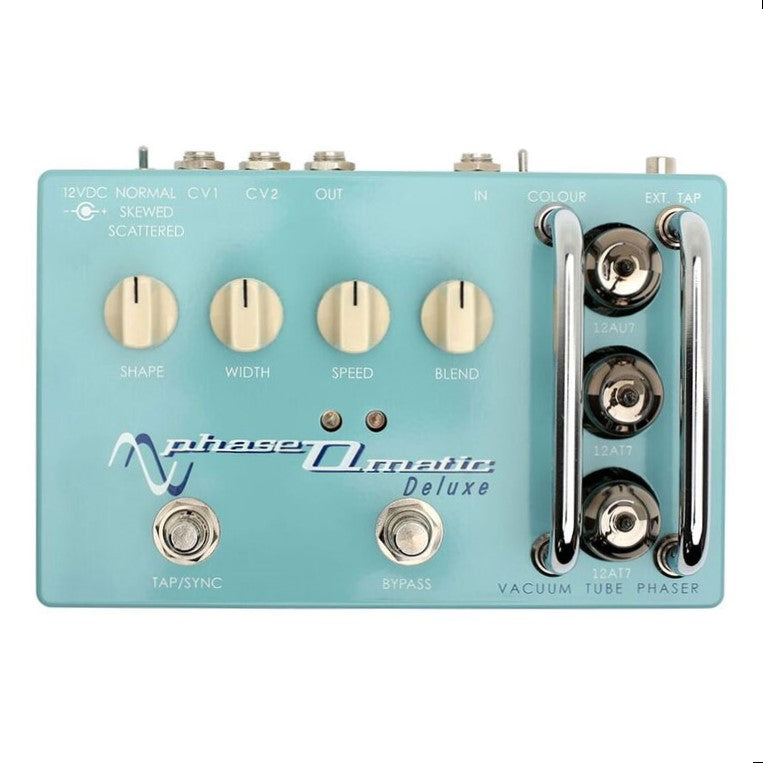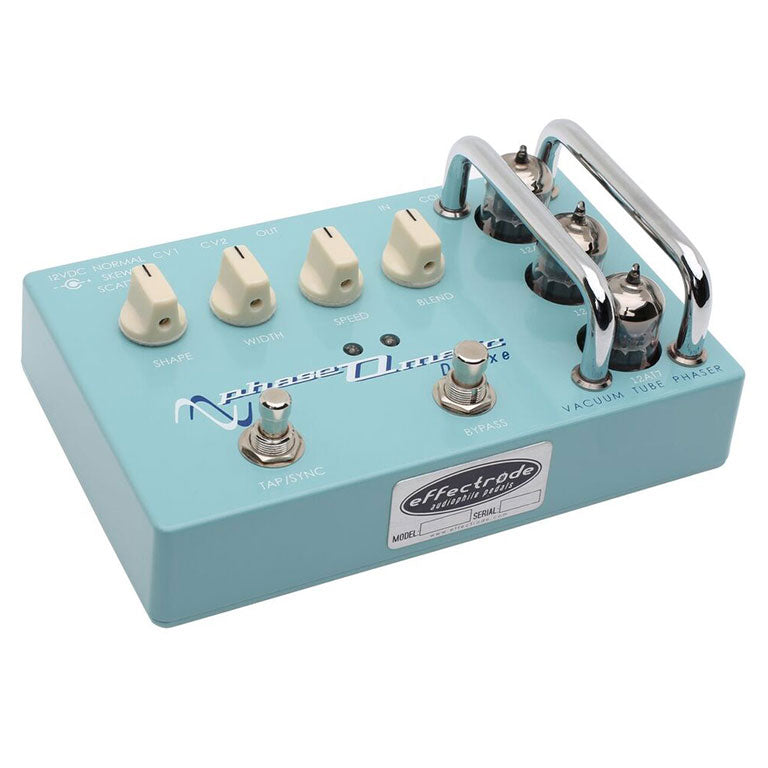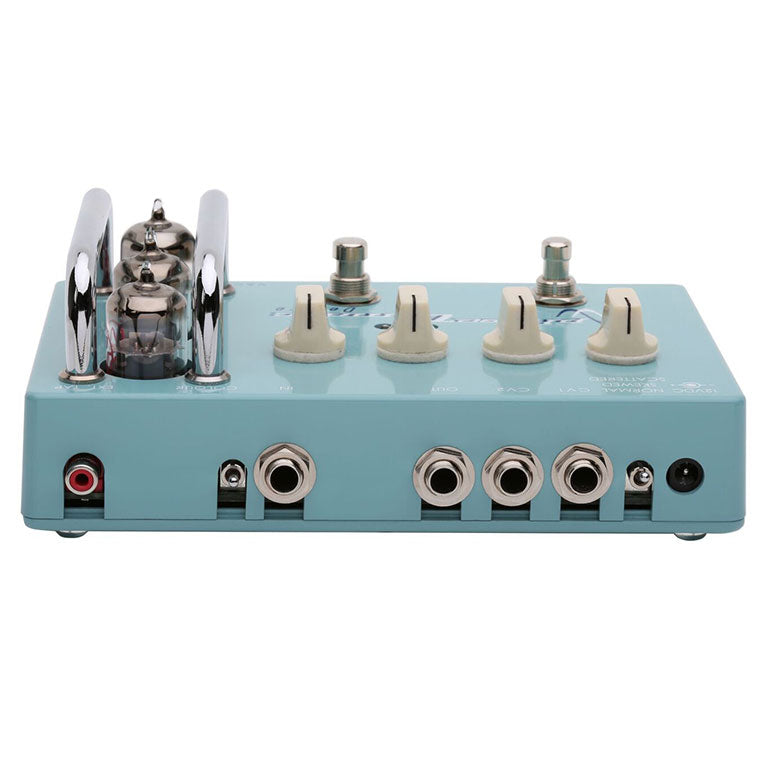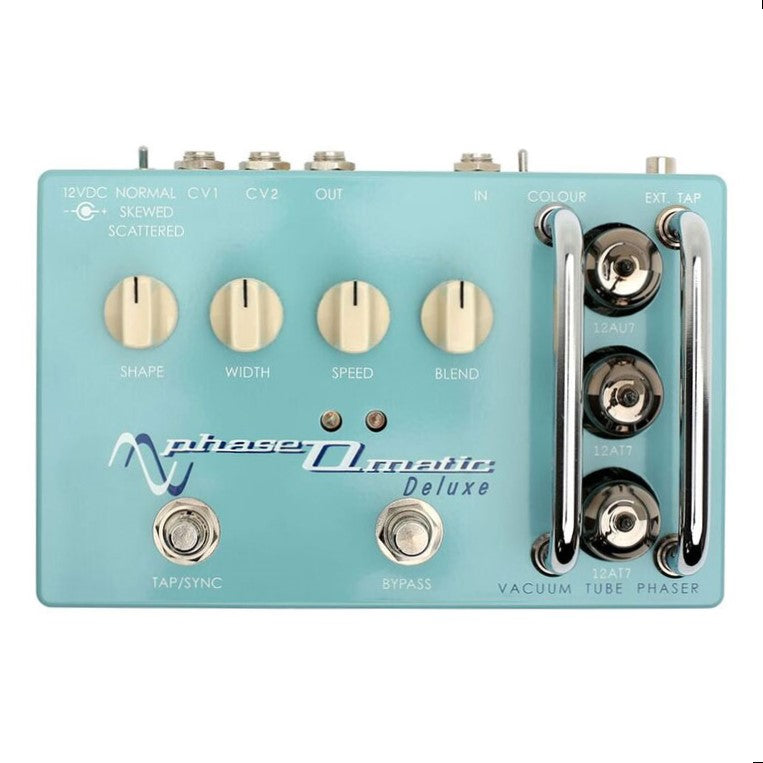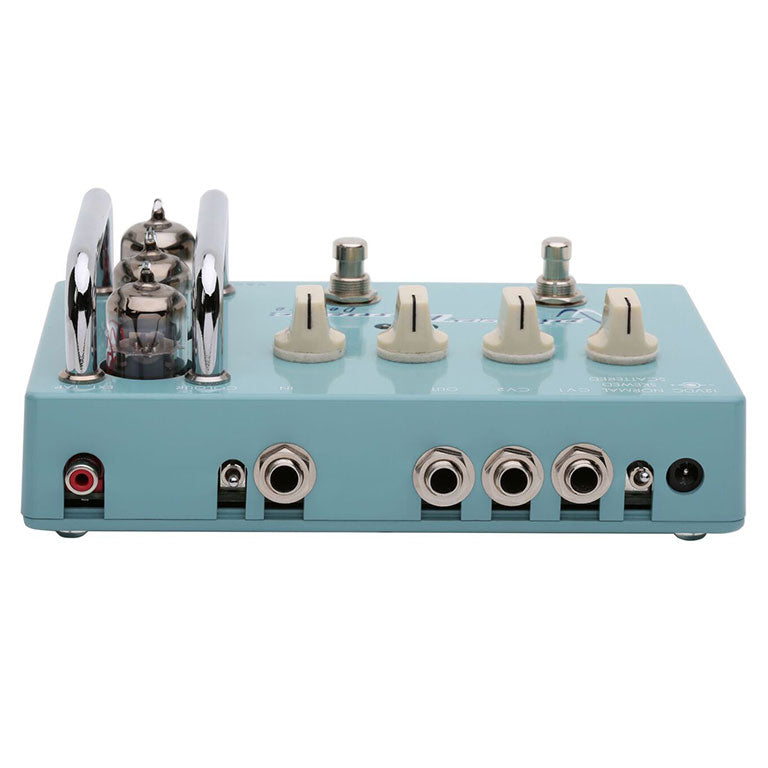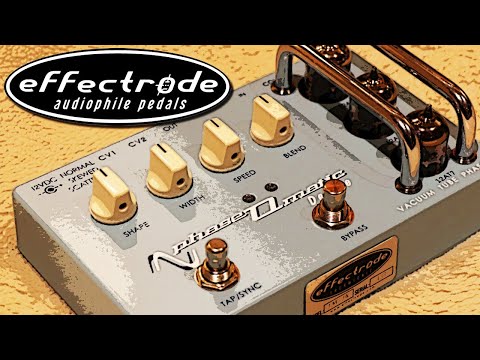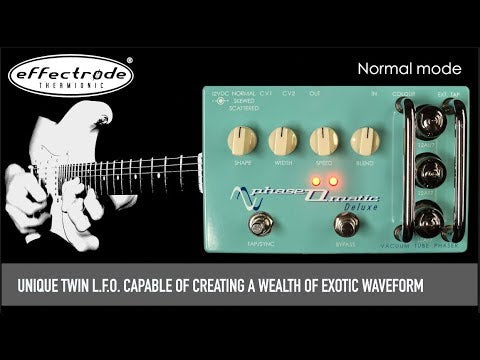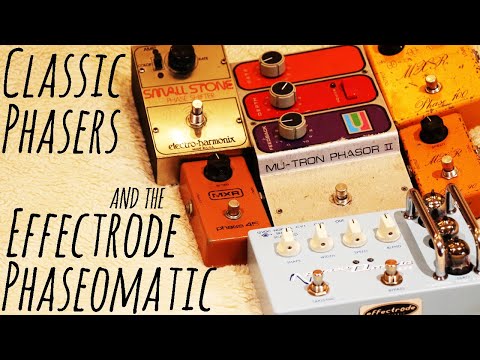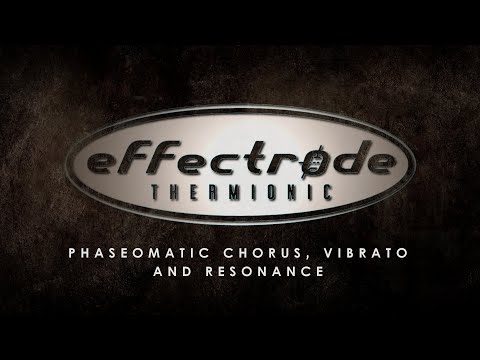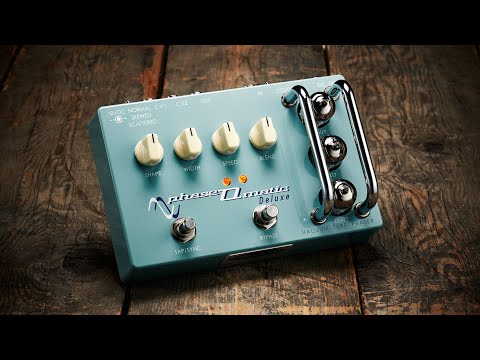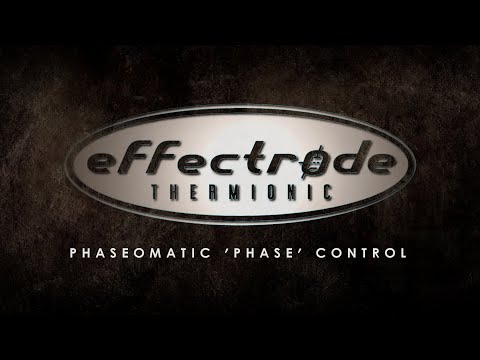Effectrode
Phaseomatic Deluxe
Phaseomatic Deluxe
FREE 2Day Shipping
FREE 2Day Shipping
USA Free 2 Day Shipping
(Next day in New England)
Canada NOW FREE!
Worldwide 30USD Flat Rate*(Wherever you are)
Flat Rate means no additional charge for more than one pedal.
No Hassle Returns
No Hassle Returns
Just let us know within 30 days from arrival.
If there's a malfunction, shipping's on us.
Couldn't load pickup availability
Vacuum Tube Phaser
Back in the mid-1990s Effectrode began a focused ten-year research & development project to perfect thermionic vacuum tube circuitry with the aim of creating a truly unique and exceptional phaser pedal. Their mission was a success!
Effectrode's Phaseomatic Deluxe generates stunningly rich, dimensional phasing effects, but it’s not just a studio quality phaser. This modulation machine can also sculpt a wide range of other effects, including true vibrato, swept-wah, meta-chorus, ‘Leslie’ rotating speaker sim, self-oscillation and a host of vintage, spacious sounds heard on B-rated 1950's sci-fi movie soundtracks–Altair IV here we come!
High-quality audiophile components coupled with a triode tube signal path yield the ultimate in natural and transparent sound, ensuring the tone of your guitar, bass or keyboard remains pristine and intact. The Phaseomatic also features a unique twin LFO. capable of creating a wealth of exotic waveform shapes and lush, organic phasing sounds–an experimental musician’s dream machine!
-
CV1 and CV2 (Control Voltage) inputs allow the speed and width to be controlled with an expression pedal
-
Blend knob adjusts the mix of 'dry' and phaseshifted signals–fully counter-clockwise is 100% 'dry' signal and fully clockwise is 100% phase-shifted signal (i.e. true vibrato). When the ‘Blend’ knob is set centrally at 12 o'clock the mix of 'dry' and phaseshifted signals is equal, producing a deep, rich phasing effect. The notch-depth and thus the intensity of the phasing can be fine-tuned by adjustment around the centre position.
Note: ‘Shape’, ‘Width’ and ‘Speed’ knobs affect LFO #1. To alter these parameters for LFO #2 press and hold down the ‘Tap/Sync’ footswitch whilst adjusting the knobs (with jumper Link removed).
-
Colour toggle switch introduces two different types of resonance (feedback). With the switch set ‘down’ feedback is routed from the 4th phase-shift stage. This works well with acoustic guitar at slower sweep rates adding movement and texture. When the switch set ‘up’ feedback is routed from the 2nd phase-shift stage, which is subtler. Note: because of how the feedback is injected back into the phaseshift stages the action of the ‘Blend’ knob is reversed. When the switch set in the ‘centre’ position no feedback is introduced.
-
Bypass footswitch allows selection between ‘effectified’ (tube buffered phasing) and ‘noneffectified’ (true bypassed ‘dry’) signal.
-
Shape knob adjusts the profile of the phase sweep by altering the LFO wave shape. Wave shapes are continuously variable, morphing seamlessly from one into another as the knob is rotated. More shapes can be accessed via the 3-way ‘Normal/Skewed/Scattered’ toggle switch on the rear panel.
-
Width knob sets the phasing sweep range. Counterclockwise positions yield subtle phasing effects and minimise pitch detuning for natural, useable vibrato tones–vibrato with full sweep produces the ‘sloshing’ sound of seasickness! Width has a big effect on stepped, rising and falling waveforms, creating some deliciously chewy sounds.
-
Speed knob sets the rate of notch sweep (phasing) across the audio spectrum. In counter-clockwise positions the sweep rate is at it's slowest. When fully counter-clockwise a stationary notch is created, introducing deep mid-scoop, which can greatly enhance 'nasal', out of phase ‘Strat’ tones.
In ‘tap tempo’ mode the ‘Speed’ knob functions as a tap divide/multiply control when the ‘Tap/Sync’ footswitch is pressed and held down. Rotate the knob clockwise for ¼ (16th ♪), ⅓ (eighth ♪ triplet), ½ (eighth ♪), 1/1 (quarter ♪), 3/2 (dotted quarter ♪), 2/1 (half ♪), 3/1 (dotted half ♪), 4/1 (whole ♪) modulation speed divisors
-
Normal/Skewed/Scattered toggle switch selects between three banks of different LFO waveforms. The ‘Normal’ bank contains symmetrical linear sweep waveforms; the ‘Skewed’ bank contains a range of lopsided waveforms; and the ‘Scattered’ bank contains harder transition, stepped and pulse waveforms.
-
Tap/Sync footswitch sets the rate of sweep. Two or more successive presses (taps) of the footswitch set the rate according to the foot tap rate putting the pedal into ‘tap tempo’ mode. Moving the ‘Speed’ knob slightly will put the pedal back into ‘standard’ mode. One press just resets the phase sweep to the beginning of its cycle allowing resynchronisation with the beat when playing in a live situation.
Note: Phase sweep speed can also be set accurately using an external tap tempo controller such as the Time Traveler™ pedal or any controller pedal that features a normally open momentary footswitch. Connection is made via the RCA jack socket on the rear panel of the Phaseomatic.
-
Internal Feedback trim-pot sets the amount of signal fed back from the phase-shift stages to create resonance and self-oscillation effects–beware of high output levels! To access the ‘Feedback’ trimpot, first disconnect the power to the pedal, unscrew the six screws underneath the pedal and remove the base-plate. A watchmaker’s screwdriver or trimming tool will be required to adjust the trim-pot.
- With the internal jumper Link in place the twin LFOs are phase-locked, i.e. their ‘Shape’, ‘Width’ and ‘Speed’ are the same, yielding maximum notch depth. Further, when the ‘Tap/Sync’ footswitch is pressed and held down, the ‘Shape’, ‘Depth’ and ‘Speed’ knobs become ‘Wow’ (speed variation), ‘Dither’ (wave shape dithering) and ‘Phase’ (variable from 0º-180º) controls for the second LFO
